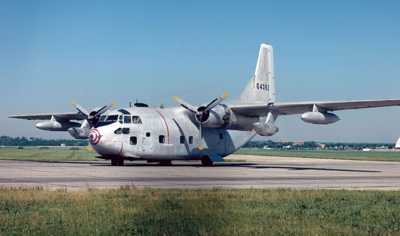Despite reports and statements from VA officials that an announcement was pending regarding the benefits status of Agent Orange C-123 reservists exposed to toxic herbicides, no decision has been announced. The VA now says there is no set date for when the agency will announce its decision.

The Fairchild C-123K Provider nicknamed “Patches” is at the National Museum of the US Air Force.
This development has to be a disappointment to C-123 airmen and their families, who have long fought for recognition of their issue and access to health carte and disability compensation benefits for their diseases, conditions and illnesses related to Agent Orange exposure. Air Force reservists flew in the Fairchild C-123 aircraft between 1972 and 1982.
These aircraft were returned stateside after their use during the Vietnam War. The Air Force used 34 C-123 and C-123K aircraft during Operation Ranch Hand for spraying of herbicides, most notably Agent Orange (AO), and some used until 1971 for spraying insect control. These aircraft could carry 1,000 gallons of herbicide and spray three gallons per acre over an area 240 feet wide. The concentrations were 20 to 55 times normal agricultural use for killing plants.
On January 9, the Institute of Medicine (IOM) of the National Academies released a report stating the airmen were exposed to toxic herbicide residue in the C-123s, including Agent Orange.
The report titled “Post-Vietnam Dioxin Exposure In Agent Orange-Contaminated Aircraft”, released Friday, Jan. 9, 2015, found that these Air Force Reserve members may be at risk for developing diseases and conditions related to Agent Orange.
The IOM scientific panel, comprised of public health experts, said they could state “with confidence” that some of the 1,500 to 2,100 Air Force Reserve personnel who served on these C-123s after the Vietnam War were exposed to dioxin levels exceeding health guidelines for workers in enclosed spaces. This exposure increases the risk for these airmen for developing diseases, illnesses or conditions consistent with exposure to herbicides, including Agent Orange, according to the study.
Since the report’s release, the VA has been studying the IOM’s findings. In early March, VA Undersecretary for Benefits Allison Hickey told some media outlets that the agency planned to announce a decision within a a week. That announcement did not happen. A VA spokesperson has since said there is no timetable for a decision to be made regarding the C-123 airmen’s plight.
The Department of Veterans Affairs (VA) has considered Air Force reservists who served in these post-Vietnam C-123s ineligible for health care and disability coverage under the Agent Orange Act of 1991.
The IOM report was the result of the VA asking the IOM to evaluate whether service in Operation Ranch Hand C-123s could have exposed Air Force reservists to herbicide residues at levels harmful to their health.
The report’s conclusion does not support VA’s long-maintained position, posted on its website, that “although residual TCDD — the toxic substance in Agent Orange — may be detected in C-123 aircraft by sophisticated laboratory techniques many years after its use, the [VA] concluded that the existing scientific studies and reports support a low probability that TCDD was biologically available in these aircraft. Therefore, the potential for exposure to TCDD from flying or working in contaminated C-123 aircraft years after the Vietnam War is unlikely to have occurred at levels that could affect health.”
Stay tuned. ….
